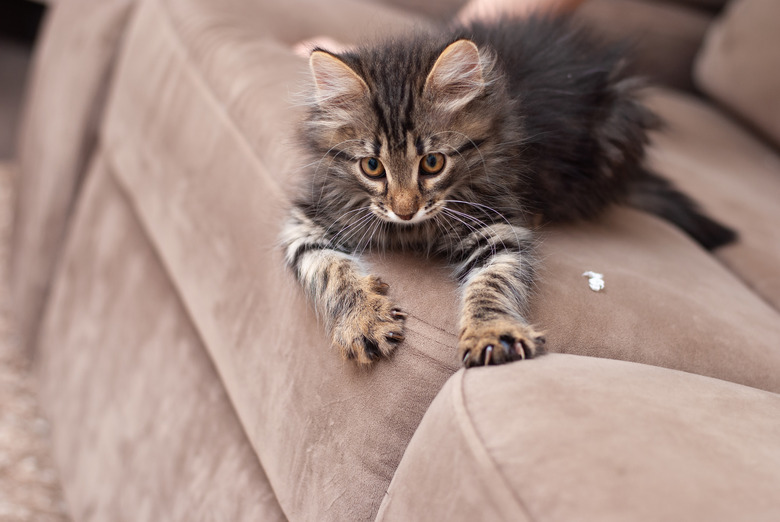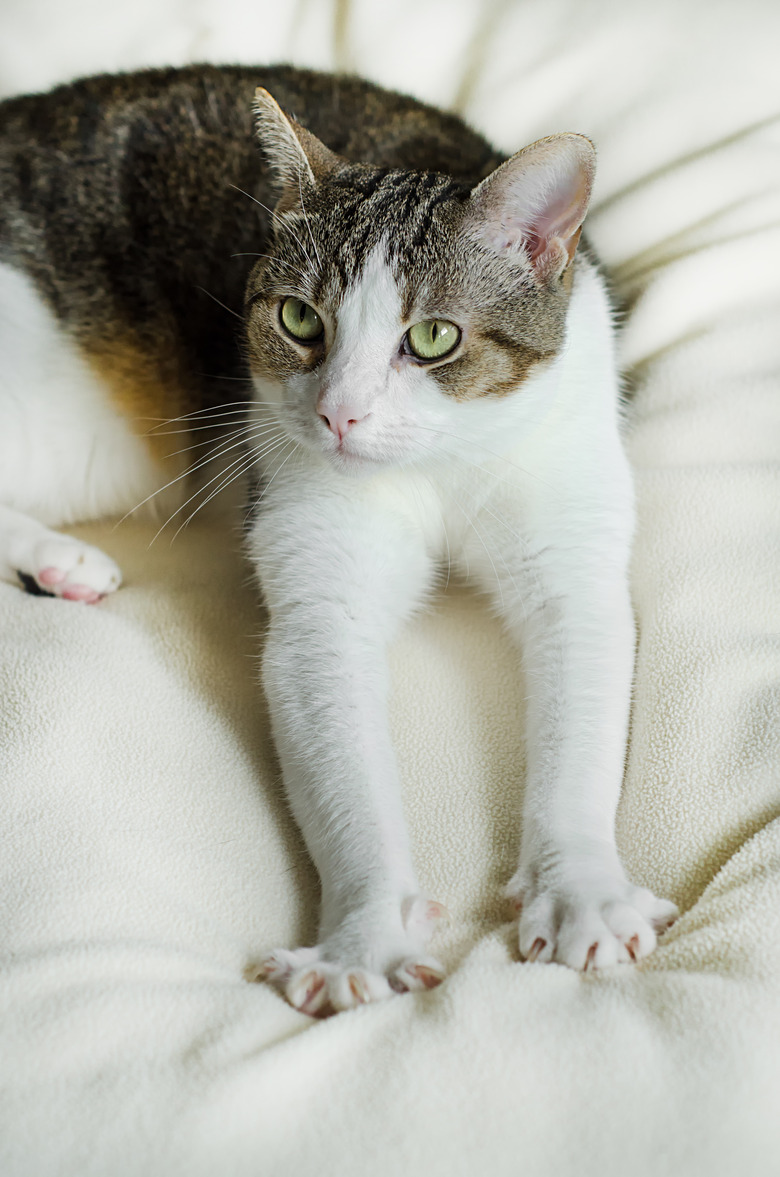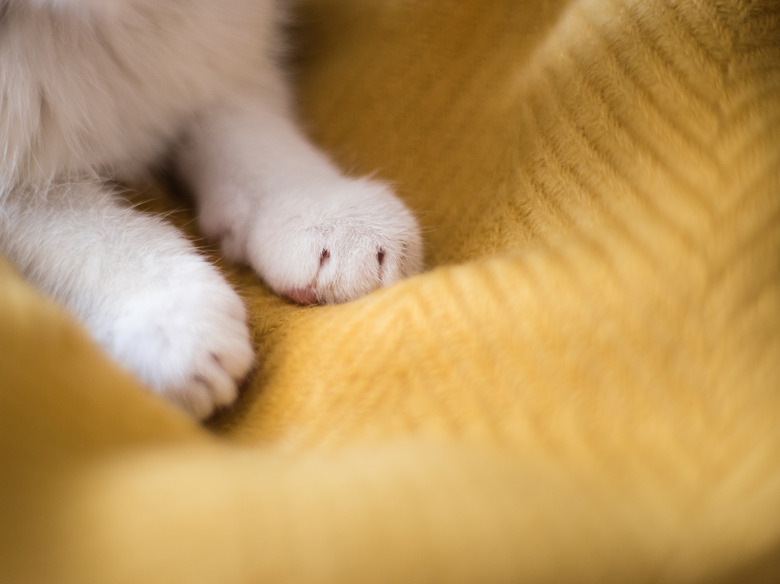Why Do Cats Use Their Claws When They Knead?
Those with feline friends in their lives likely know this situation all too well: you're resting comfortably on your couch or bed with your cat curled firmly nearby you when she begins purring and kneading your lap. Suddenly, the moment is interrupted by ten of the sharpest claws you'll (hopefully) ever feel in your life. Cats knead for a number of reasons, but why do the claws come out at seemingly peaceful times?
Why do cats knead?
Why do cats knead?
"Making biscuits," "baking bread"... whatever affectionate term you choose to use, a cat's kneading habits stem from infancy. Kittens can be seen stimulating the flow of milk from their mother's teats by using their front paws to push on the breast. This trait can be seen among cats well into adulthood, who will sometimes do it as a form of comforting and stress relief. Sometimes, cats will knead soft surfaces or outdoor areas as a way to create a soft bed for them to rest in.
Additionally, cats will often knead surfaces in the home, like furniture or blankets, to mark their territories. Cats leave traces of their scent through kneading thanks to scent glands located in their paw pads. Whatever the reason, kneading is a completely normal and healthy part of cat behavior, but can sometimes become painful for anyone resting under those tiny feet if the claws make an appearance.
Why do cats bring out their claws to knead?
Why do cats bring out their claws to knead?
When a cat brings out his claws during a satisfying kneading session, it's most likely due to the fact that it feels good. We may conflate a cat's claws with our own fingernails, but a claw on a feline is actually attached to the last bone on the toe, says The Humane Society. When the claws are retracted, this bone rests in an upright position, and when they are extended they stretch forward, according to Merck Veterinary Manual. Extending the claws, when not done to harm enemies or prey, can feel like a stretch for a cat, and is often seen when felines perform a full-body stretch—arching the back, stretching the front legs outward, extending the claws and finishing up with a good back leg lunge.
It's important to differentiate between a cat using his claws while kneading, and cats who scratch in and around the home. When not displayed during kneading, scratching is often done as a way for cats to to mark territories, which is done via the scent glands in their paws, and visibly when leaving a physical scratch on a surface, says VCA Hospitals. Additionally, cats scratch at things, like tree trunks or scratching posts, to keep their claws in good health, which is an ingrained behavior inherited from their wild ancestors, and one that wild or feral cats who do not have humans around, rely on.
Cat claw safety tips
Cat claw safety tips
Cat clawing while kneading isn't done to harm, but that doesn't mean it can't still hurt or feel uncomfortable. If your cat tends to extend her claws while enjoying a good kneading session, place a blanket under her paws to absorb the nails. Keep your cat's nails trimmed, and offer scratching posts to help her shed the top layer of her nails in between trimmings. If your cat is clawing you too hard, you might consider applying temporary soft plastic caps, like Soft Paws, to her nails.
Conclusion
Conclusion
Cats knead to help themselves feel comfortable and free of stress, and usually, when the claws come out it's no cause for concern. Kneading with claws is often done as a way to enjoy a deep stretch, and as long as there's no dragging or biting involved, you probably just have a happy cat on your hands.
To keep yourself safe from scratches, place a thick blanket on your lap for your cat to knead, keep your cat's nails trimmed, and talk to your veterinarian about applying protective plastic caps to your cat's claws.


